 Life & Style
Life & Style

An exhibition titled Vestige of a Land explores the life of communal houses in northern Việt Nam along the Red River.
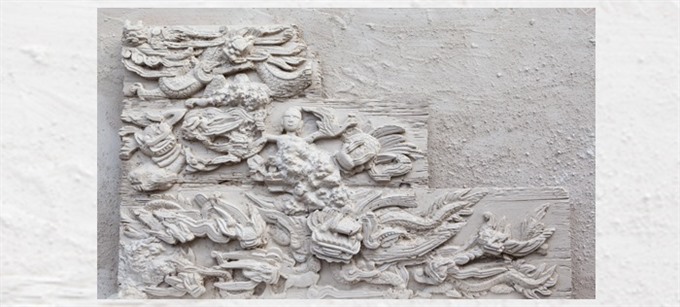 |
| Communal: The exhibition Vestige of a Land explores the life of communal houses in northern Việt Nam along the Red River. — VNS Photo Minh Thu |
HÀ NỘI — Remnants of altars, carved letters in the old Nôm script, carvings, architectural posts and beams have been collected together to honour the đình làng, the ancient Vietnamese communal houses that still dot the country. They are being displayhed at an exhibition that opened on Friday in Hà Nội.
The exhibition Vestige of a Land explores the life of communal houses along the Red River plains, a major birthplace of Kinh (Vietnamese) culture.
Artist Lê Giang has made plaster models of some objects to inform visitors of the use of đình làng in the past - as accommodation for visiting dignitaries, including nobles and kings, as places to pay repects to village deities and village scholars, and as a place for villagers to gather on special occasions.
The show reflects the cyclical fluctuations of the Red River and how they influenced the modification of spiritual monuments.
The artist acknowledged that social and cultural changes have loosened bonds between past and present. Social activities that used to take place within the walls of such monuments have drastically altered to the point that many of surviving structures are falling into decay and are losing their identities.
“Recognising the eventual disappearance of spiritual relics, the exhibition raises questions on how Việt Nam can draw from the past to refresh the new. We must ask ourselves where we stand today and what visions we have,” said Giang. “We may not have definite answers, but unearthing artefacts from the past may give us some clues to the quest.”
Giang said ruins were a long-standing aesthetic fascination for her. "In many ways, ruins constitute an ambodiment of the past, while remaining temporally linked to our present time," she said.
“This is how I choose to question the relationship between humankind and the natural world. The excavated reconstructed communal houses use the architectural ornamentation found in my father’s hometown village in Đông Anh District, Hà Nội.”
The ruins of a communal house, altar, cuốn thư (wooden scroll placards) and wooden beams have been cast in plaster.
“Perhaps, this is a futile act of personal attachment to an incessant river moving us forward in an everchanging nature and society," said Giang.
The exhibition is the result of six months co-operation between the artist, Sino-Nôm researcher Nguyễn Đình Hưng, vernacular architect Phạm Thanh Thủy and environmental consultant Nguyễn Thùy Dương.
They joined the project, Shaping the Future – A Cultural Perspective, which was founded by the Goethe Institute.
After completing her MA in Fine Arts in London, Giang returned to her native Hà Nội.
Her works range from installations to illustration, often feature fragile materials like ash, glass, coal and plaster. Giang has exhibited in groups and solo in Britain, Singapore, Japan, the Philippines and Việt Nam.
The exhibition will run until January 12 at the Hà Nội Goethe Institute, 56-58 Nguyễn Thái Học Street.
A talk show by researcher Hưng will take place on December 20. He will talk about woodblocks used for Sino-Nôm script.
After the initiation of other printing techniques from Europe as well as the disappearance of Sino-Nôm, the wooden blocks soon lost their established function as the only way of producing manuscrifts. Under harsh conditions such as climates and termites, these relics slowly dematerialised over time which resulted in substantial loss of knowledge. — VNS
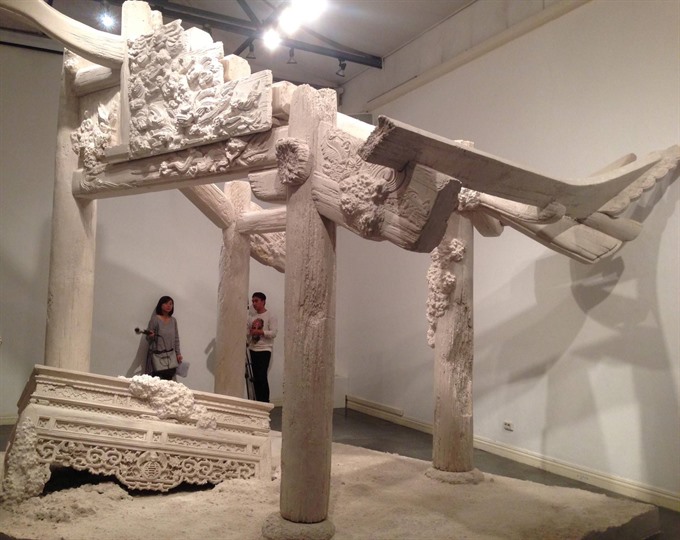 |
| From the past: The ruins of a communal house at artist Lê Giang’s exhibition. — VNS Photo Minh Thu |
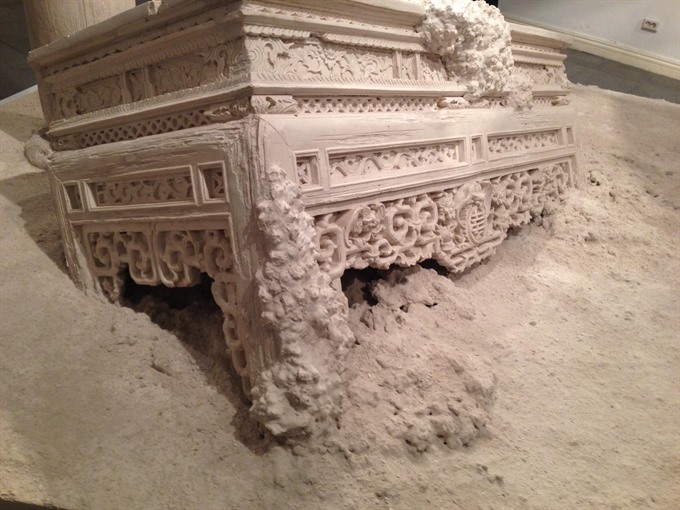 |
| Dissolving: An altar ruined by termites disappears slowly into the dust. — VNS Photo Minh Thu |
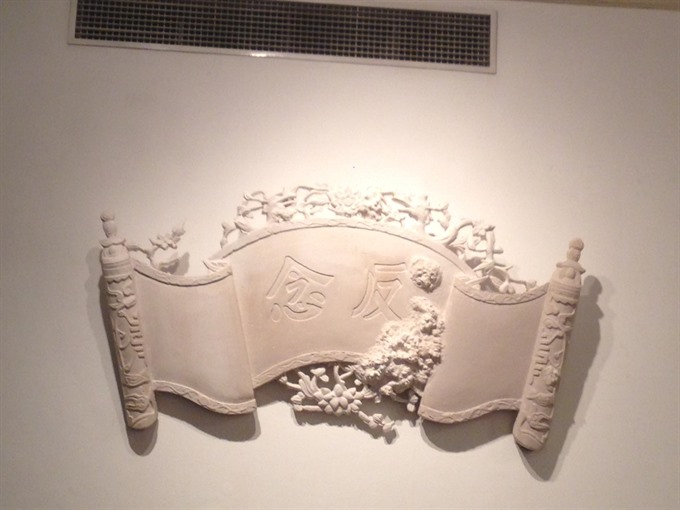 |
| Replica: A plaster replica of cuốn thư (wooden scrolls) damaged by termites. — VNS Photo Minh Thu |
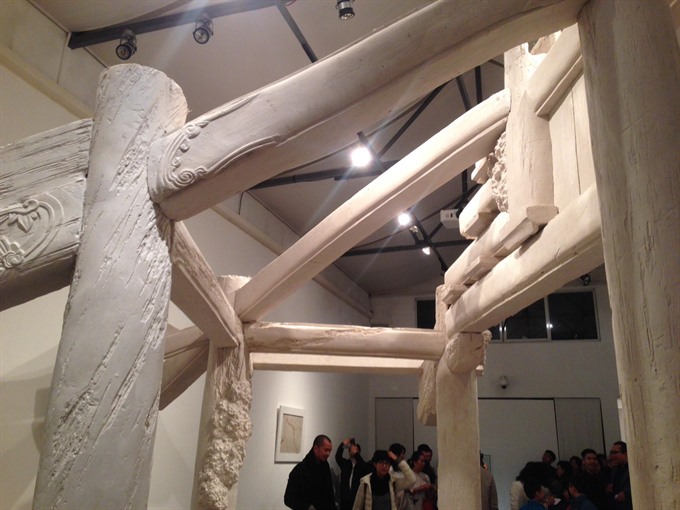 |
| In plaster: The wooden structure of a communal house is remade with plaster. — VNS Photo Minh Thu |




